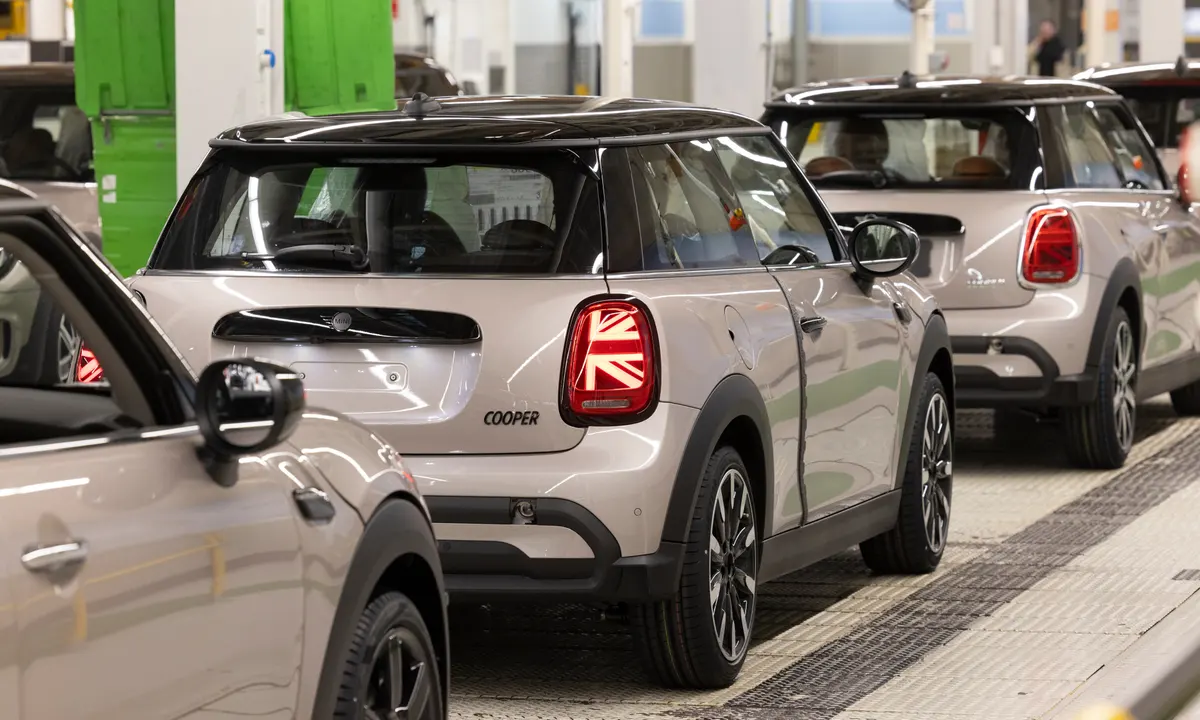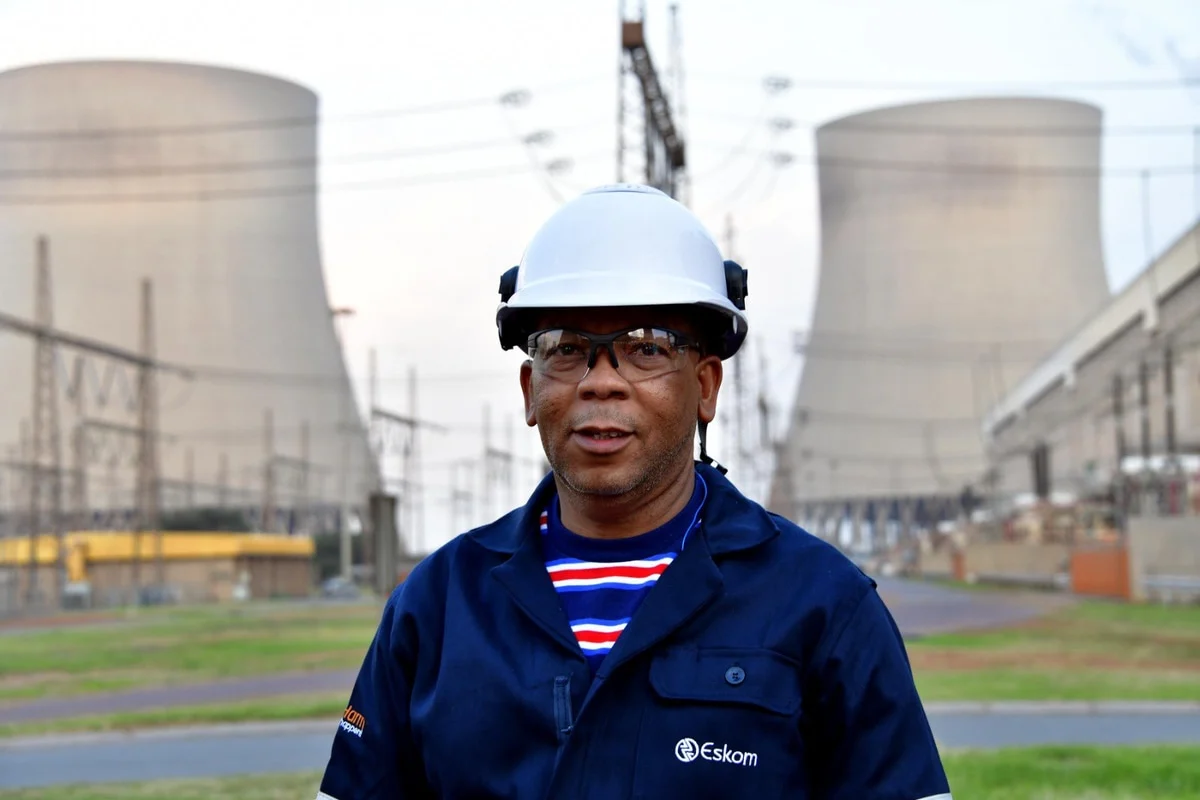Business
Mexico’s Moment: The Biggest US Trading Partner Is No Longer China

Billions of dollars are pouring into America’s southern neighbour, but will it seize or squander the opportunity?
The new Cold War is a business opportunity, and Mexico looks better placed than almost any other country to seize it.
US-China tensions are rewiring global trade, as the US seeks to reduce supply-chain reliance on geopolitical rivals and also source imports from closer to home. Mexico appeals on both counts—which is one reason it’s just overtaken China as the biggest supplier of goods to the giant customer next door.
On top of resurgent exports, Mexico boasts the world’s strongest currency this year and one of the best-performing stock markets. Foreign direct investment is already up more than 40% in 2023, even before Tesla Inc. starts building a proposed $5 billion factory. Not since the signing of the North American Free Trade Agreement in the 1990s has the country held the kind of allure for investors that it has right now.
Yet Mexico has a history of missing what could have been its moments. Over the past three decades, even a trade deal with the world’s biggest economy—which, just like today’s wave of so-called “nearshoring,” brought plenty of foreign investment—couldn’t pull Mexico out of a rut.
Since 1994, the year Nafta took effect, growth has averaged about 2% a year, well below par for developing economies, and nowhere near enough to lift millions of Mexicans out of poverty. Turkey, Malaysia and Poland are just three examples of nations that were poorer than Mexico at the start of this century and are now substantially richer.
And there are plenty of obstacles, old and new, that could cut the current boom short.
The government of President Andrés Manuel López Obrador has repeatedly clashed with business interests as it seeks to bolster the state’s role in the economy. Mexican companies have been reluctant to borrow and make the investments that could help turn a growth spurt into something more enduring. And the country is up against fierce competition, from Vietnam and other nations, in the race to replace China as a supplier to the US.
What’s more, even the investments that Mexico is already getting are putting its infrastructure under growing strain, amid bottlenecks created by erratic power transmission, limited industrial space, and water scarcity.
Pedro Campa Eliopulos, a tech executive in the northern industrial hub of Monterrey, has a close-up view of Mexico’s potential for liftoff—and the limitations.
Two years ago, when Tesla was poised to open a factory in Texas, it was seeking a supplier to make the “brains” of its electric vehicles—the computers that connect to satellites, allowing autonomous driving—somewhere nearby, instead of shipping them all the way from China. Taiwan-based Quanta Computer Inc., Campa’s employer until recently, stepped up to meet the demand from a plant in Monterrey, the capital of Nuevo León state. “We started to outfit the building by August, and by December we were producing,” he recalls. Soon Tesla itself will be a neighbor, with construction of the Monterrey Gigafactory due to start this year.
Campa describes how the plant kept getting hit by power blackouts that took a chunk out of its productivity, because the city’s electrical grid struggles to keep up with its fast-growing industries. At such moments, he says, his thoughts on Mexico’s prospects turned gloomy. He wondered if “much of nearshoring will go elsewhere—because we don’t have the capacity to receive it.”
For all the pitfalls, there’s no doubt that parts of Mexico look like industrial boomtowns right now.
In Monterrey dust from the diggers is everywhere as new plants spring up. Warehouses are sold before the ceilings and the doors get put in. Industrial space has grown 30% since 2019, according to real estate adviser CBRE.
That’s partly because of the rush to provide components for Tesla. AGP Group makes windshields, China’s DSBJ makes electronics parts, Italy’s Brembo SpA makes brakes—and they’re all setting up or expanding factories.
All told, more than 30 companies have moved to Nuevo León since Tesla announced plans to build factories in Texas and Nuevo León, according to Iván Rivas Rodríguez, the state’s economy minister. “It was a request from Tesla to its suppliers, telling them ‘You have to come to North America,’” says Rivas, who sees his own job as making sure the deals close.
It’s not all about Tesla, though. Other carmakers including General Motors, Kia Motors and BMW have announced EV investments in Mexico since the start of 2021. Electronics and home appliance makers are expanding in the center of the country. Across the border from California, the aerospace and plastics industries are growing.
Industrial parks are filling up fast. Nationwide, vacancies fell to 2.1% last year, according to the Mexican Association of Private Industrial Parks. In Monterrey, getting a lease typically requires a 10-year commitment now. The association estimates that some three-quarters of renters are foreign companies. And a survey by Spanish bank BBVA found that one in five of the new arrivals are Chinese businesses—many of which are looking to sidestep US tariffs.
Industrial real-estate developer Corporación Inmobiliaria Vesta SAB raised almost $450 million in a US initial public offering in July that was the biggest by a Mexican company for more than a decade, and says it’s accelerating a $1.1 billion pipeline of projects as nearshoring revs up demand. Prologis Property Mexico SA and its parent company are planning a $1.2 billion investment in warehouses and land.
Local landowners are among the big winners, too. “We’ve spent fifteen years saying, ‘We’re here, we’re here’—and then, boom!” says José María Garza De Silva, the third generation in his family at the helm of developer Grupo GP, whose early projects included housing developments and the city’s first shopping mall. The firm is a stakeholder in Monterrey’s biggest industrial park.
Still, Nuevo León’s natural resources might impose one set of limits on growth. A drought last year left reservoirs almost empty and thousands of residents without water. Local industry had to accept a smaller share of the state’s supplies, and the government is racing to build a new aqueduct to bring water to Monterrey.
Then there’s the question of whether domestic investment will pick up—which could help spread the benefits of the nearshoring boom more widely, and shift the economy onto a faster growth track. Absent that, some economists say Mexico will just end up importing more components to be assembled for export, with little value added locally.
Northern Mexican lender Banco Base SA has seen its loan book expand by some 75% over the past five years. That’s partly thanks to the renewed interest in exporting to the US, says Gabriela Siller, the bank’s director of economic analysis. But she’s concerned that Mexico isn’t making the most of this latest surge in investment.
“Nearshoring is an opportunity in Mexico, one that we’re not taking full advantage of,” says Siller. For reasons that include high interest rates and an entrenched informal economy, smaller businesses haven’t been able to use credit to expand, she says. “Many companies don’t want to take risks—the local ones more than the foreign ones.” And what investment there is tends to be concentrated in a handful of places, like Nuevo León.
That’s essentially what happened under Nafta too—and it’s the outcome López Obrador says he’s determined to prevent this time around.
The popular president, known as AMLO, is entering his final year in office and wants to leave his Morena party well-placed to hold onto power in elections next summer.
“We’re seeking to make growth in Mexico more horizontal,” AMLO—who hails from the relatively poor southern state of Tabasco— told reporters in April. He’s repeatedly pointed to the water shortage in places like Nuevo León as the kind of problem that arises when growth in the economy, and consequently the population, is lopsided.
López Obrador has earned a reputation for being anti-business. He’s tried to curtail the role of foreign firms in Mexico’s energy markets and earlier this year dispatched troops to renationalize a privately run railway line, before reaching an accord with its billionaire owner. On the other hand, the president was actively engaged in talks with Elon Musk about the Tesla investment, and says he welcomes job-creating foreign companies—he just would like to see them spread more evenly across the country.
So far, the leading contenders in next year’s presidential election say they’ll continue pushing to develop the south. Claudia Sheinbaum, who is AMLO’s protégée, has promised she’d see through many of his plans. Xóchitl Gálvez, a businesswoman and senator who’s the main opposition candidate, says she’ll seek to channel more investment into renewable energy, and better training for women to expand the country’s technical workforce.
Mexico made its reputation in world manufacturing with what are called maquilas—factories that sprung up as early as the 1960s, mostly along the US border. It was a profitable model of assembly-line production, employing low-wage labor. Under Nafta, exports got an additional boost, accelerating the growth of northern cities like Monterrey. But the trade deal also enabled a surge in imports of corn and other US-grown foods that made small-scale farming less viable—emptying out the Mexican countryside, and entrenching the wealth gap between north and south.
López Obrador keeps a notoriously tight grip on the public purse, but he’s made an exception for public investments aimed at leveling up the south. Projects underway include a rail link between the Gulf of Mexico and the Pacific, which goes by the grand name of Interoceanic Corridor. Officials envisage the route will be lined with industrial parks and say it could eventually rival the Panama Canal.
The problem, from an investor point of view, is that all these locations are simply further from the US. When Mauricio Garza, the director of Nuevo León’s biggest industrial park, is pitching customers, he never forgets to mention that you can drive to a border-crossing in under three hours without hitting a single red light.
Ultimately, Mexico’s appeal to global businesses rests on “its geography and its free trade agreement” with the US, says Gerardo Esquivel, a former deputy chief of the country’s central bank. “The reason they turn and look at Mexico, and that Mexico is attractive, is that it’s already integrated into the United States,” he says. That’s going to bring more investment flows “even if Mexico doesn’t do anything.”
Overall, Esquivel is upbeat about the boost that Mexico’s economy will get from nearshoring, citing estimates that it could end up adding as much as 0.7 percentage point of GDP each year. “It seems little, but it’s not, considering that we grow 2% per year,’’ he says. “Going up to 2.7% or 3% a year would be great.”
© Bloomberg
Business
Legal Intelligence Firm redefines regulatory compliance with high-profile hire

In a world in constant flux, unpredictability has become the norm: socio-political shifts, the
increasing interconnectedness of multinational companies and ever-changing and expanding
body of laws and regulations means that compliance is becoming increasingly complex. As
such, governance, risk, and compliance (GRC) has become relevant now more than ever, and
artificial intelligence-driven technology is equipping organisations to make decisions in the face of uncertainty.
Months after acquiring big data software developer Pythagoria to intensify their data intelligence offering, legal-tech pioneer Afriwise has appointed GRC juggernaut Vishala Panday to champion product innovation and solutions around compliance to empower organisations operating in Africa to navigate complex legal and regulatory landscapes.
As the Head of Compliance Services, Panday’s expertise lies in the intersection of compliance,
technology, and organisational strategy. According to Panday, Afriwise is the next natural step in her career as it presents her with a significant opportunity to consolidate and utilise her diverse and multi-faceted experience to evolve GRC practices across African industries. “I was initially drawn to Afriwise’s client-centricity and commitment to cultivating the cutting edge of legal technology. Afriwise offers a powerful combination of proprietary legal and regulatory databases, AI, and expert analysis from top legal counsel and empowers African-operating businesses to make intuitive, meaningful decisions in real-time. I am excited to apply my depth of experience to develop tailor-made fit-for-purpose client solutions that add real and tangible value to business decision-making and risk mitigation.”
Panday believes that the value derived from structured data, artificial intelligence and
technology in the realm of regulatory compliance is intrinsic to business success. In order to
remain competitive, utilising technology to make quicker and better-informed decisions is a
business imperative. “Ethics and Compliance in business can err on the side of esoteric –
executive buy-in becomes less likely when the value is not explicit, tangible, or visible. My
approach to ethics and compliance is grounded in realism; GRC outcomes must be practical,
cost-effective, realistic to implement, and most of all, business-driven,” says Panday.
Many legal teams across the globe are becoming smaller and leaner, and conversely, the
regulatory landscape is ever-changing and growing. Most organisations do not have the luxury
of additional sets of hands to process reams of legal information in order to ultimately make
business decisions. Leveraging off of structured data and AI makes it possible for lean legal and compliance functions to evolve their roles into strategic business partners by delivering
practical, high-quality, and timely information to critical business stakeholders.
Prior to joining Afriwise, Panday enjoyed a decade-long tenure as Head of Ethics and Compliance at Barloworld Equipment, where she built an ethics and compliance function from scratch using a centre-led approach cutting across all of the African jurisdictions of operation. Within her first 12 months on the job, Panday rolled out an anti-corruption programme that included the management of the whistleblowing line, and investigations into ethical violations. This programme secured her the title of “Changemaker of the Year”, and she credits the ability to sink her teeth into a whole spectrum of ethical issues within a large corporate environment to her intuitive and practical approaches to compliance.
Panday’s non-traditional modus operandi is shaped by a culmination of understanding of
business best practice coupled with her foundational legal experience. “Early on in my career, I
learnt very quickly that assessing GRC through the lens of a traditional legal practitioner was
insufficient. Traditional legal practice means that the in-house counsel or legal advisor operates at arms-length of the core business environment, operating simply as a support functionary who generally advises reactively, rather than strategize with stakeholders proactively. In order to be effective in my role as a GRC functionary, I needed to become part of the business. To enhance her business and strategic acumen, Vishala went on to pursue a BCOM in Finance early on in her career, shortly after acquiring her LLB degree, and more recently, during 2022 completed an MPhil in International Business through the Gordon Institute of Business. It is this business acumen that provides me with a more practical approach to the application of ethics and compliance within corporate settings.
Steven De Backer, CEO and Founder of Afriwise says that Panday’s vision will pave the way
for even greater business success. “Vishala Panday is a highly regarded GRC professional and
it is a great privilege to have her on board to develop new and innovative products and help
evolve our compliance offering. Vishala is an individual of astute moral integrity with a wealth of knowledge; she will be a guiding force to not only transform how we do business but set a new standard for the industry at large. In many ways, she feels like Afriwise’s missing puzzle piece.”
CONTACT INFORMATION
Issued on behalf of Afriwise by:
Lauren Crooks
lauren@lockandkeyconsulting.co.za
+27 82 078 7199
ABOUT AFRIWISE
Leading provider of integrated legal and regulatory intelligence solutions in Africa
Afriwise is an award-winning legal intelligence platform, transforming and democratising access to legal and regulatory information across Africa and beyond. At Afriwise, we help organisations, whatever their size, advance their business in Africa and gain a competitive advantage by providing them with business, legal, and regulatory intelligence based on technology and human expertise.
Afriwise is the result of years of experience and trust building, through close
collaboration with firms across Africa, to give you easy and instant access to the expertise and
know-how you need about local markets on the continent. Our collaboration with over 150 law
firms on the continent is further testimony of our team’s deep links within Africa. By leveraging our unparalleled database, cutting-edge NLP technology, in-house expertise, and extensive network we help solve our clients’ most pressing legal and regulatory challenges.
Video:
Website: www.afriwise.com
Business
BMW and Jaguar used banned China parts – US probe

BMW, Jaguar Land Rover (JLR) and Volkswagen (VW) used parts made by a supplier on a list of firms banned over alleged links to Chinese forced labour, a US congressional report has said.
At least 8,000 BMW Mini Cooper cars were imported into the US with components from banned Chinese firm Sichuan Jingweida Technology Group (JWD), according to the report by Senate Finance Committee chairman Ron Wyden’s staff.
“Automakers’ self-policing is clearly not doing the job,” the Democrat Senator said.
Jaguar Land Rover told the BBC it “takes human rights and forced labour issues seriously and has an active ongoing programme of human rights protection and anti-slavery measures”.
BMW and VW did not immediately respond to requests for comment.
Mr Wyden also urged the US Customs and Border Protection agency to “supercharge enforcement and crack down on companies that fuel the shameful use of forced labour in China”.
The report added Jaguar Land Rover had imported spare parts which included components from JWD after the company was put on the banned list.
JLR said it has now identified and is destroying any stock it holds around the world that include this component.
In February, VW said thousands of its vehicles, including Porsches and Bentleys, had been held by authorities because they had a component in them that breached America’s anti-forced labour laws.
VW had voluntarily informed customs officials about the issue, the report said.
Congress passed the Uyghur Forced Labor Prevention Act (UFLPA) into law in 2021.
The legislation is intended to prevent the import of goods from China’s north-western Xinjiang region that are believed to have been made by people from the Uyghur minority group in forced labour conditions.
JWD was added to the UFLPA Entity List in December 2023, which means its products are presumed to be made with forced labour.
China has been accused of detaining more than one million Uyghurs in Xinjiang against their will over the past few years.
Authorities have denied all allegations of human rights abuses in Xinjiang.
“The so-called Uyghur Forced Labor Prevention Act by the US is not about forced labor but about creating unemployment. It does not protect human rights but, under the guise of human rights, harms the survival and employment rights of the people in Xinjiang,” Chinese Foreign Ministry spokesperson Wang Wenbin said.
“China strongly condemns and firmly opposes this. We will take measures to resolutely safeguard the legitimate rights and interests of Chinese enterprises.”
© BBC News
Business
Sony sees higher profit from image sensors, to conduct stock split

Sony Group (6758.T), said on Tuesday it sees operating profit growing 5% to 1.28 trillion yen ($8.2 billion) this business year with a boost coming from its image sensors.
Sony is a major supplier of image sensors for smartphones and that business is expected to book a 40% rise in operating profit on higher sales and lower costs.
The Japanese conglomerate said it would conduct a five-for-one stock split and buy back up to 2.46% of its shares worth 250 billion yen.
It sold 20.8 million PlayStation 5 units last year, narrowly missing its revised target of 21 million units issued in February following weaker-than-expected sales over the year-end shopping season.
Sony sees profits at its gaming business rising 7% in the current year due to smaller hardware losses as it sells fewer consoles, and higher sales from its PlayStation Plus subscription service.
Known as the inventor of the Walkman and the MiniDisc, Sony has transformed from an electronics manufacturer into an entertainment and technology juggernaut spanning movies, music and games and chips.
The Japanese tech conglomerate plans a partial spin-off of its financial unit with a listing in October 2025 in order to focus on its entertainment and chips units.
The gaming sector has been hit by a slowdown with Xbox maker Microsoft (MSFT.O), last week moving to shutter studios including Tokyo-based Tango Gameworks in the latest cost-cutting measures.
Sony said in February it would lay off 900 workers at its gaming business and shutter a London studio.
Sony Pictures last week sent a letter expressing interest in acquiring Paramount (PARA.O), with private equity firm Apollo (APO.N), Reuters reported.
A deal would create a formidable Hollywood studio with a share of around 20% of the North American box office.
In the year ended March, Sony recorded a 7% fall in operating profit, due to lower profits at its life insurance business. The result was in line with estimates.
© Reuters
Business
Eskom’s energy availability factor has breached the 70% as R53 million spent on diesel last week to power Open Cycle Gas Turbines

Electricity Minister Kgosientsho Ramokgopa stated on Monday that Eskom’s Energy Availability Factor (EAF) has breached the 70%, while just over R53.4 million was spent on burning diesel to power the Open Cycle Gas Turbines (OCGT) last week.
Eskom has consistently defended it’s use of OCTG’s, saying it was only being used during morning and evening peaks to meet high electricity demand when it is necessary.
The power utility says South Africa is currently in a load shedding free environment, not because they are burning diesel to keep the lights on, but because of their extensive maintenance programme and success of their Generation Operational Recovery Plan, which was initiated in March last year.
According to Ramokgopa, who spoke during a media briefing on Monday, the EAF has breached the 70% mark and is currently tracking at 70.78%. This is the first time the EAF has breached 70% since August 2021.
For the month-to-date, the EAF is at 64,34% and year-to-date (YTD) the EAF has reached 59,92%.
Load shedding has been suspended for 47 consecutive days during which time the OCGT usage has been lower than the same time as last year. Ramokgopa said between May 5 to 11, OCGTs were in use for just four days, with just over R53 million spent on diesel on those four days.
On Monday, R23.5 million was spent on diesel to power the OCTGs, R11.9 million was spent on Tuesday and Wednesday, and R6.4 million was spent on Thursday.
Eskom said that South Africa has been without load shedding due to the utility having sufficient generation capacity from a more reliable generation fleet and has denied reports in the Mail and Guardian that it was overusing its diesel-burning OCGTs.
In April this year, Eskom spent R1.1 billion on OCGTs, producing 167.8 Gigawatt hours (GWh).
This was about 60% less than April 2023, when a staggering R3.1 billion was spent to produce 470.22GWh, the utility said.
Ramokgopa said that the OCGT load factor for April 2024 decreased significantly to 6.8% compared to last year’s figure of 19.13%.
Eskom said that its diesel budget from May to June was R5.8 billion, and only R1.16bn had been spent as of May 9, 2024, or 19.7% of the total budget.
Generation performance
The minister said that consistently good performance has come from the Kusile, Lethabo, Majuba, Matla and Medupi power stations, and these stations have helped contribute to the EAF trend.
Eskom noted that Medupi and Lethabo, specifically, have achieved a YTD EAF greater than 70% (peaking at 87.6%,) by the end of March 2024.
In terms of stations showing an improved trajectory, the minister said that the EAF has been assisted by improving performance from the Arnot, Camden, Hendrina and Grootvlei power plants.
He said suspension of load shedding is driven by an improvement in coal fleet performance, supported by solar during the day.
On Friday, Eskom said in a statement that unplanned outages have reduced by 4,400MW since April 26, 2024, due to extensive maintenance.
“Eskom’s outlook for the winter period of 2024 states it will continue to strategically utilise its peaking stations, including OCGTs – these will be dispatched during morning and evening peaks to meet high electricity demand, when necessary,” Eskom said.
‘End of load shedding is in sight’
On Monday, President Cyril Ramaphosa praised the Energy Action Plan and said that the end to load shedding is in sight.
“It is too early to say that load shedding has been brought to an end. However, the sustained improvement in the performance of Eskom’s power stations, as well as the new generation capacity we have added to our energy system gives us hope that the end of load shedding is in sight,” Ramaphosa said in his weekly newsletter.
“A renewed focus by Eskom on maintenance and the return to service of several units is now showing results. Losses due to unplanned outages have reduced by nine percent between April 2023 and March 2024, adding the equivalent of 4,400MW of capacity to our national grid,” he added.
“Better maintained and more reliable power stations have increased the country’s EAF. The EAF has been above 60% since April, compared to 53% over the same period last year.”
Ramaphosa also praised Eskom’s leadership team and highlighted the work done by the power station general managers and their teams.
“The leadership, management and staff of Eskom, particularly the power station general managers and their teams, are to be commended for their efforts. The work of the National Energy Crisis Committee, which coordinates the response across government, has also been vital. The strong partnership with business and the support of other social partners has enabled the deployment of valuable resources and expertise,” he concluded.
© IOL










You must be logged in to post a comment Login